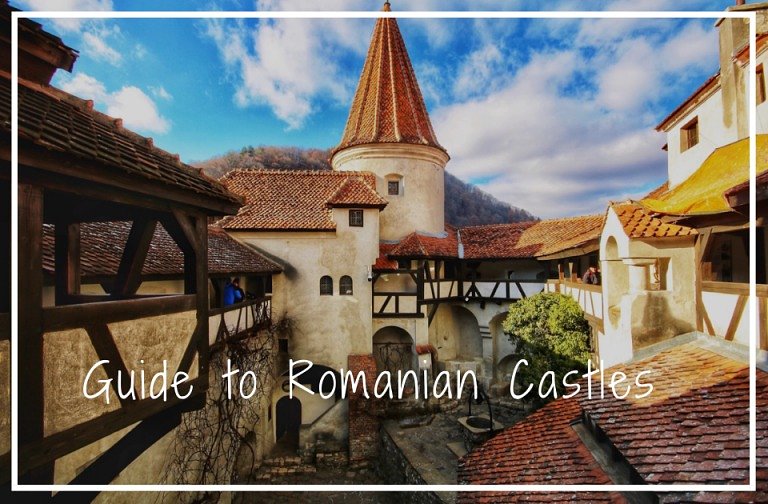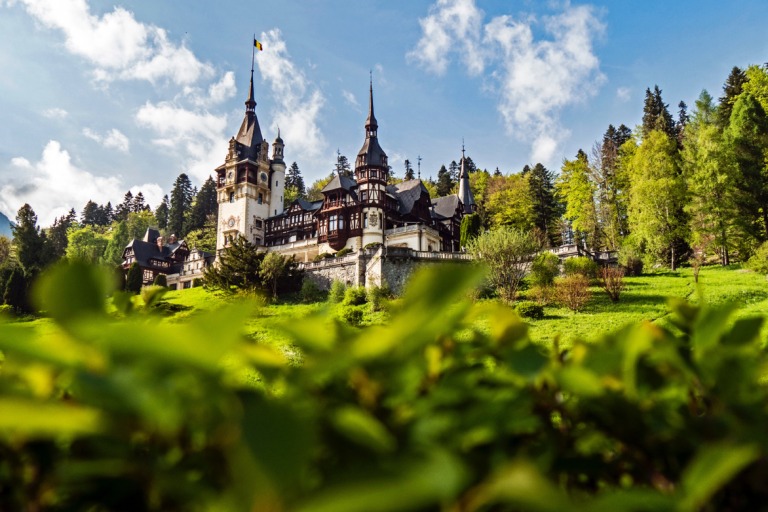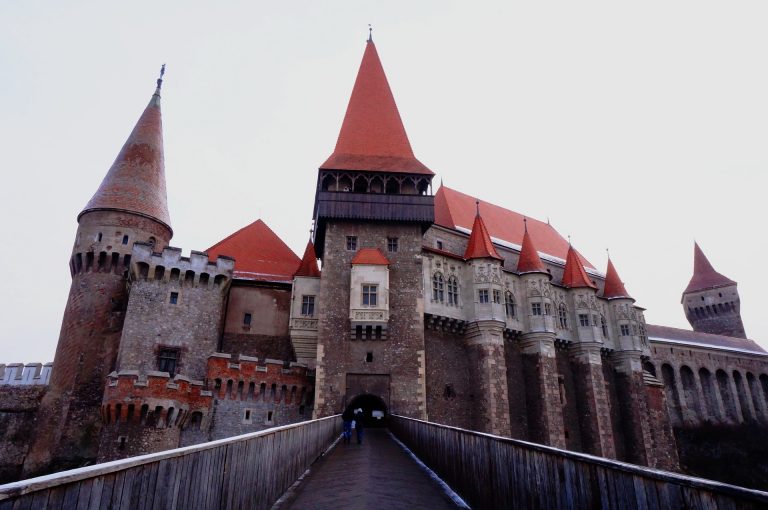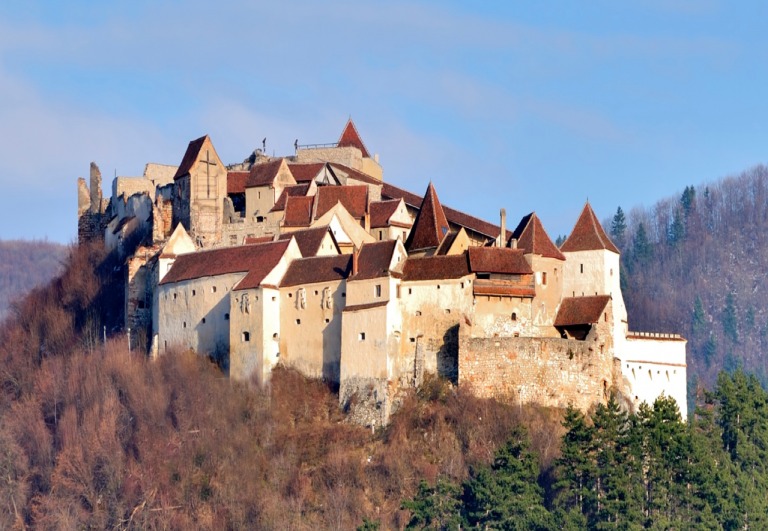Guide to Romanian Castles

Posted on Tue 8 Jun 2021
When visiting Romania, it’s hard not to be hit with a sense of awe and wonder, as if you have travelled in a time machine to a bygone era. Even in the capital Bucharest, a modern city compared to many of the other smaller towns and cities within the country, you’ll be met with a feeling of the old world colliding with the new. Venturing out of the city, modern interferences become a scarcity and you are left with a country that relies on a more traditional way of living. The country’s heritage is one that the Romanian native people look to preserve, and this is seen in the architecture across the country. One of the architectural marvels is the collection of castles; these are often grand structures seemingly torn from the pages of fairy tales. In this guide, we’ll be looking at some of the country’s best known and most iconic castles.
Peles Castle

As castles go, Peles Castle is relatively young, having had its construction begin in 1873 and completed in 1914. It is located in the heartland of the country, with the closest major city being Brasov, just one hour away. The castle is situated on the eastern outskirts of the Bucegi National Park and only a few minutes drive from the small town of Sinaia.
Aesthetically, it is considered one of the most stunning castles in Europe, with the stark contrasting black and white colours, laced with gold detailing. King Carol I, for whom the castle was built, spared no expense in the construction, with the castle being the first in Europe to have electricity. Additionally, the castle also has hot and cold running water along with central heating. Each room of the castle is decorated in a different theme, with Italian, Turkish and Indian styles all being employed. The castle operates a winter and summer programme, opening at 9:15 (11:00 on Wednesdays) and closing at 16:15.
Bran Castle

Perhaps the most iconic castle in Romania, famed for being the inspiration behind Dracula’s Castle in Bram Stoker’s novel. The castle was built during the 13th Century and is majestically perched atop a 200-foot high hill above the town of Bran.
Visiting the castle is a surreal experience, as from the moment you set through the door, you are immediately transported to a mediaeval era. With narrow, winding staircases along with underground passages and intricately designed rooms, the castle feels like it holds many secrets. Having briefly been a royal residence for Queen Marie of Romania from 1920 to 1948, the castle is now a museum and attraction for visitors.
During the summer season, the castle is open from 9:00 (midday on Mondays) until 18:00, this changes to closing at 16:00 in the winter season.
Castilul Corvinilor

Otherwise known as Corvin’s Castle, this magnificent structure is wholly reminiscent of Hogwarts School from the Harry Potter series. The spiked turrets and walkway to the entrance lend the castle a mystical feel. The castle has been been built in phases, with the first designs being created in the 14th-century with the final phase finishing during the 19th-century.
The castle is located towards the west of the country with the closest major city being Deva, and is open to the public from 9:00 (12:00 on Mondays) until 17:00.
Jidvei (Bethlen-Haller) Castle
With the construction taking place during the 16th-century, the castle’s principle design is French Renaissance, however, during restorations in the 17th and 18th centuries, Baroque elements were added.
Unfortunately, due to the castle’s private ownership, visiting for the day is much more restricted than the others on this list. If you are set on exploring the structure, you’ll either need to get in touch with the Jidvei company to arrange permission to visit. Or, you can book on to one of the wine tasting experiences they offer, as the Jidvei company also own a vineyard close by.
Rasnov Fortress

Tucked away in the Carpathian Mountains, towering 650 feet above the town of Rasnov, the fortress is a huge, almost village-like structure. This is mainly due to the purpose of the fortress, built for refuge rather than military actions. The fortress includes a school, a chapel, along with 30 houses and other buildings that would be found in a village.
The last time the fortress was used for refuge was in 1848 and was left abandoned after that. Naturally, the fortress suffered damage from the elements, however, it was recently restored to former glory and now serves as an attraction for locals and visitors to the town of Rasnov.
Poenari Castle
Unlike the other structures on this list, Poenari is essentially a ruin. Located atop a hill in the heartland of Romania, the castle ruins are only accessible from completing the arduous climb up the 1,480 concrete steps that follow the hillside. Originally built during the 13th-century, the castle changed hands numerous times over the following hundred years and was eventually left abandoned. However, during the 15th-century Vlad the Impaler saw potential in the old ruins and restored the castle and consolidated its construction; he then proceeded to use the castle as one of his preferred locations.
In 1913, an earthquake caused a landslide in the region which damaged the castle, causing many of the elements to fall and crash into the river below. Two further earthquakes damaged the castle, leaving the remaining ruins that are seen to this day.
If you would like to explore Romania’s castles for yourself and unveil the mystery behind the architectural masterpieces, why not check out our Transylvania Dracula experience? You’ll have the chance to explore the capital of Bucharest while discovering Rasnov Fortress and Bran Castle. You can also check out our blog for more information on Romania and the other countries that we visit.
Read more from our blog here
